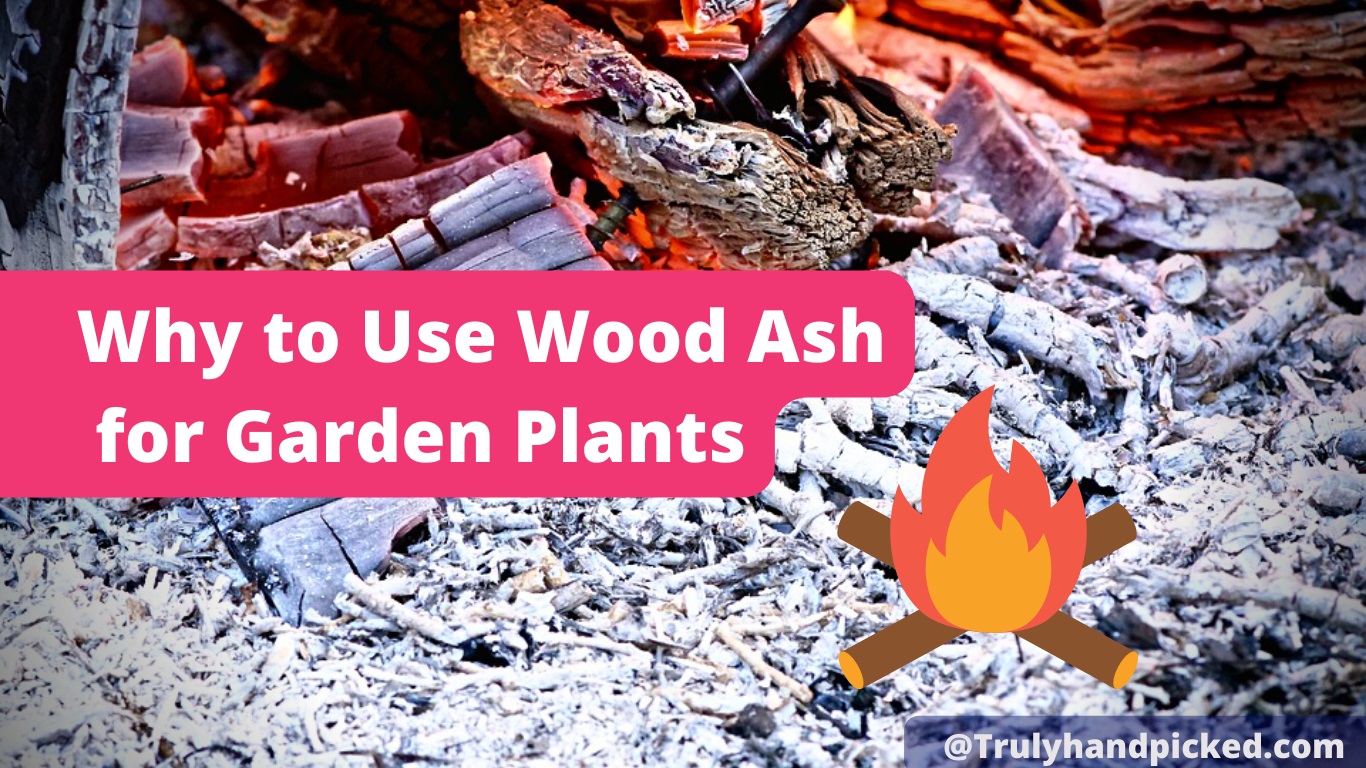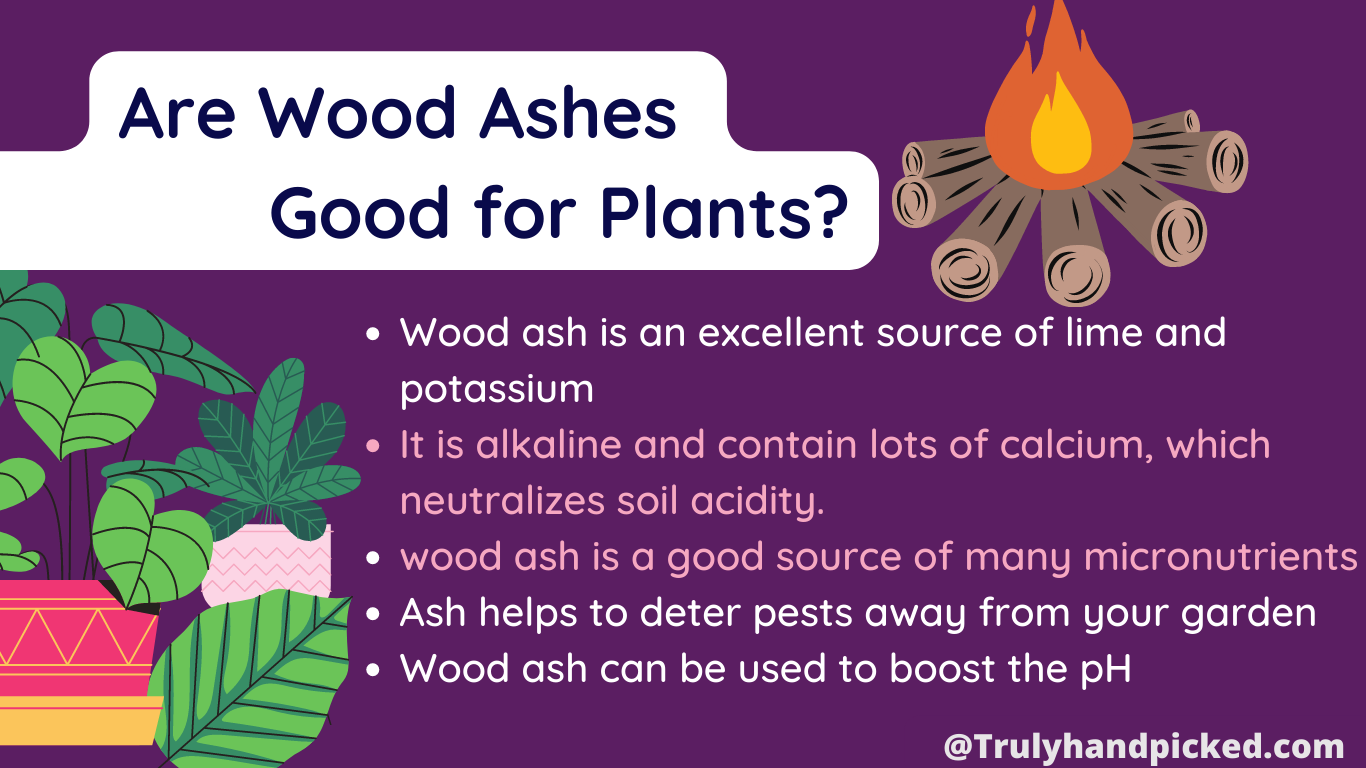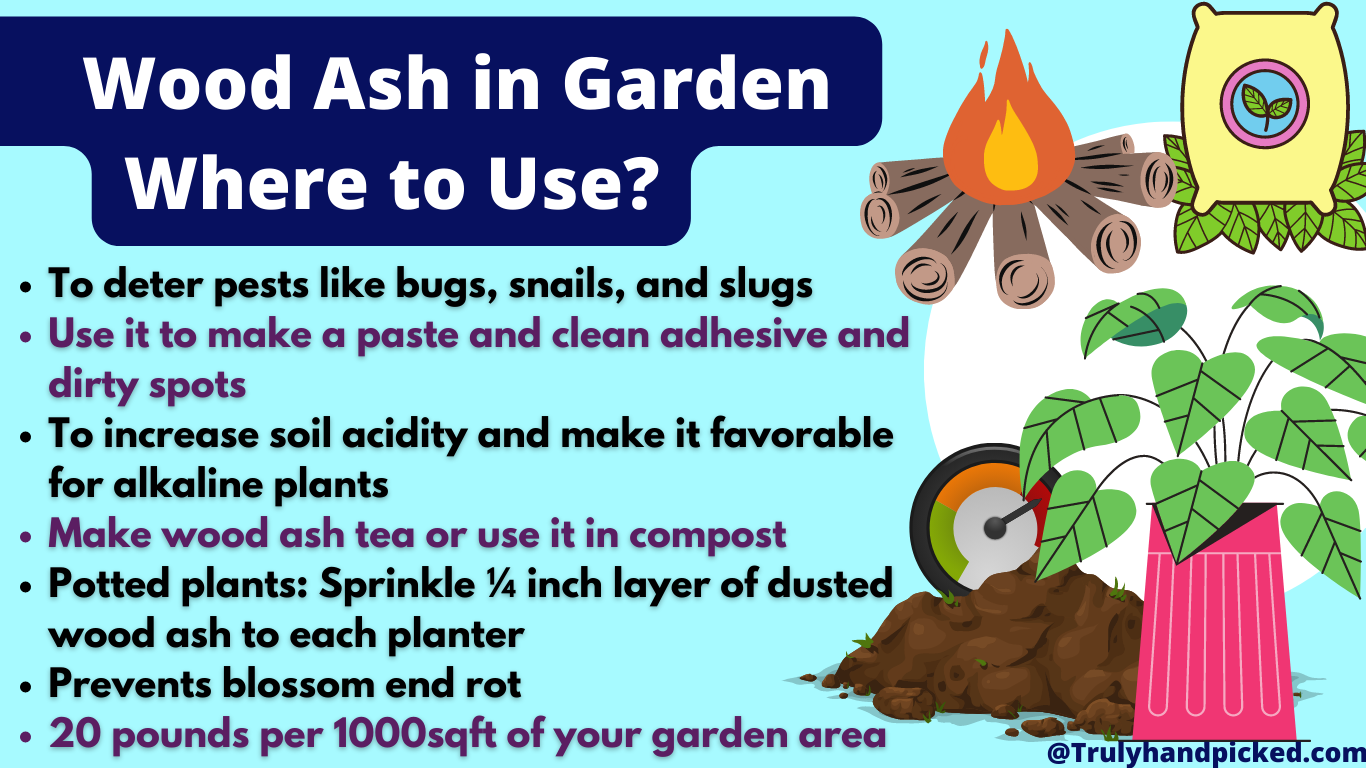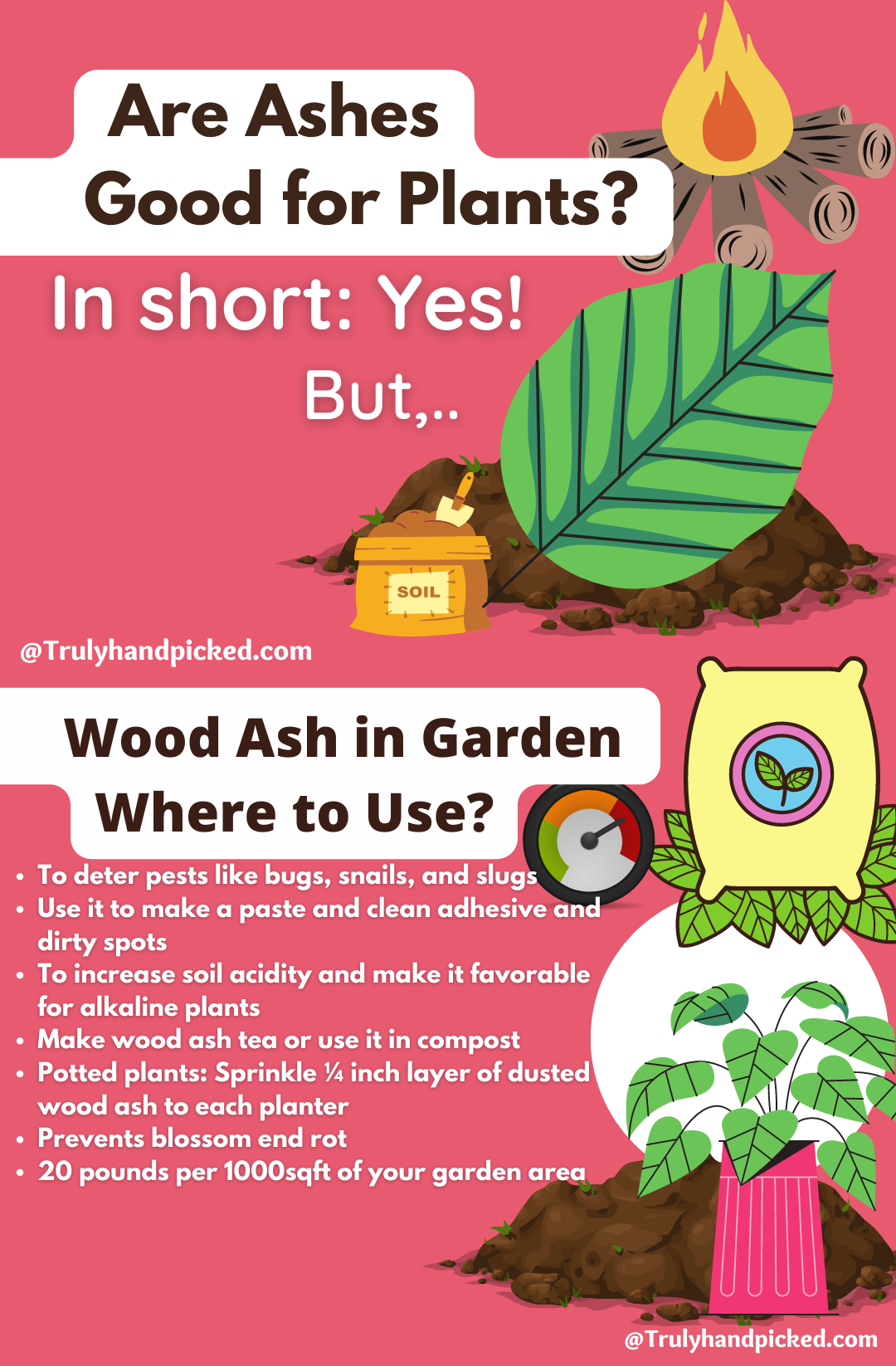Using wood ash for your garden plants is one of the most useful acts you can do to make your gardening experience more successful.
Once you know the nutrient value of wood ash, you would love to add it to your regular garden fertilization list for sure.
If you are wondering how this common junk can enhance the health of your home garden skillfully, let’s learn these few important statistics about it, and its usage as a fertilizer in our discussion below-
Is Ash Good for Plants?
Yes, wood ash is good for your garden plants and improves soil texture, and increases nutrient levels (under recommended limit it’s good).
Wood ash contains plenty of nutrients, which are essential for natural plant growth. Ash is a great source of lime and some vital minerals like potassium, phosphorus, magnesium, etc. This element also comprises some useful micronutrients that boost plant growth deeply. Thus, we can say that ash is good for plant health and make them thrive naturally.
Plants That Like Wood Ash:
Ash balances the soil pH level in a specific way; thus, it plays a helpful role in making some particular plants healthy. On the other hand, some plants get harmful effects from wood ash. So, you must be sure that your garden plants are compatible with wood ash, before applying them on your lawn or pot. Some plants, that like wood ash are-
- Lavender
- Pasque flower
- Garlic
- Maltese cross
- leeks
- Maiden grass
- lettuce
- Vinca minor
- Winter jasmine
- Yarrow
- Lenten rose
- Hosta
- Hens and Chicks
- Goldenrod
- Wild Red Columbine, etc.
You may also be interested in using eggshells in your garden.
Charcoal Ash in Garden:
Charcoal ash contains an excellent amount of potassium carbonate that benefits some plants hugely. Plants that like the alkaline type of soil, thrive with charcoal ash. So, you can use charcoal ash to your garden soil or potting soil as a fertilizer, only for those plants, which don’t like acidic soil. Plants that like charcoal ash as a natural fertilizer, are-
- Garlic,
- Chives,
- Asparagus,
- Leeks
- Lettuce
- Stone-fruit, etc.
Avoid using charcoal ash in seeds and newly planted seedlings, as they can’t stand the high potash amount of this component at such a beginning stage.
You can also use charcoal ash as a pest deterrent for your garden area. Using charcoal ash prevents beetles from your lawn easily, especially from vegetable gardens. It keeps tiny insects away from your animal coops as well.
Uses of Wood Ash in Garden:
If you are thinking of using wood ash in your garden bed to make your garden experience more effortless then, just go for it. Using wood ash would definitely be helpful to your garden plants. You can use this single component not only for fertilization but for several other purposes too, such as-
Wood Ash for Soil Modification:
Using wood ash to amend the soil quality of your garden is very common. The high amount of lime that exists in wood ash, helps to balance the soil pH level quickly. Most of the garden plants do best with a pH level between 6-7. So, if you want to keep the level under control with a natural ingredient, apply wood ash in your garden.
Wood Ash to Fertilize Plants:
Fertilization of garden plants with wood ash is another common thing that most gardeners do with it. The high amount of nutrients and micronutrients found in wood ash help your garden plant thrive more vigorously. It also fulfills the requirements of minerals, which boost the overall growth of your plant naturally.
Adding Wood Ash in Compost Pile:
Wood ash is typical household waste and thus, works great while added to your garden compost bin. Either you can add wood ash directly to your compost basket or make wood ash tea to include the liquid form of wood ash in your compost pile. To make wood ash compost tea, combine 2.5-3 pounds of wood ash in 30-gallon of water and include this prepared liquid in your compost pile directly.
Learn about using mushroom compost in garden soil and adding eggshells to compost
Use Wood Ash to Deter Pests:
The chemical compounds found in wood ash can make this thing a great element to deter some unwanted guests from your garden. Harmful pests, insects, bugs, snail, beetle, slugs, ants, plant-lice, etc. cant stand near the smell of wood ash. Thus, you can use this thing as a natural pest deterrent for your garden plants.
Also, read about how to get rid of slugs and snails naturally.
Wood Ash for Cleaning:
Wood ash, especially is made from hardwood, can help you to clean some dirty garden areas or spots on your windows or doors expertly. Make a thick paste by combining wood ash and water in equal amounts and apply the paste to that dirty spot and clean the surface in a circular motion. No matter how adhesive the spot is, wood ash can clean that area noticeably within a couple of applications.
Wood Ash to Handle Slippery Track:
If you have any slippery area in your garden or near your garden, use a handful of wood ash to cover the area in an emergency. If you don’t want to fall while crossing that slippery track, keep adding a layer of wood ash over that spot, while walking through it. You can even clean the area too with the help of this same component.
Ashes in Compost:
Using wood ash in the compost bin is one of the most useful utilizations we can do with this junk. Ashes are rich in lime as we mentioned before, while normal decomposing materials are rich in acidic content. Thus, when we use wood ash in our compost bin, it offsets the acidic quantity of compost and balances the alkaline level proficiently.
Use only a mild amount of wood ash in a normal size compost bin to keep the acidic level perfectly balanced. Don’t add charcoal ash instead of wood ash to the compost bin, as its high chemical effects can harm the health of some plants unwantedly.
How Much Ash is Enough for Potted Plants?
To finitize the soil of the potted plant and amend the pH level, you can sprinkle ¼ inch layer of dusted wood ash to each planter. Potted plants don’t need much amount of wood ash to grab their benefits in planting. Try to rake the wood ash coating a couple of times on the topsoil layer with a cultivator or hand after applying it directly.
Benefits of Using Wood Ash in Gardening:
Let’s see how this single element acts so much beneficial for your garden plants
- The high amount of lime compound of wood ash raises the soil pH level adequately to make it neutral from acidic
- The richness of calcium found in wood ash embraces the nutrient value of your garden soil deeply
- Other essential minerals found in this component, boost the plant growth of your garden plants
- Using wood ash also can prevent blossom end rot or similar corrosion of your garden plants
- The affluence of micronutrients of wood ash keeps the growth level of your growing garden plats consistent
- And can provide you with some other advantages like keeping pests away, cleaning dirty spaces, controlling fire in your landscape.
Related video on benefits of using wood ash in garden: Self Sufficient Me (Youtube)
Wood Ash as Fertilizer
How to Apply Wood Ash Fertilizer:
You have to follow some specific steps to apply wood ash in your garden for fertilizing purposes. Healthy fertilization always is followed by some particular things like the process of application, proper amount of fertilizer, perfect element of fertilization, etc.
Wood ash is a perfect fertilizer as we have discussed the reasons above. Now let’s focus on its amount and application process accordingly.
Learn about organic fertilizers and homemade plant food.
Amount of Wood Ash Needed as Garden Fertilizer:
Use almost 20 pounds of wood ash, especially hardwood ash to cover 1000 square feet of garden area to make the fertilization process flawless. As in, you need to sprinkle around 9 kg of wood ash to spread over 92-93 square m of space of your home landscape.
Application Process of Wood Ash as Fertilizer:
- Firstly, remove the large charcoal pieces from the wood ash pile
- Go for the soil fertility test to decide how much fertilization your garden soil needs
- Now, spread the dust form of wood ash over your garden bed with your hand or a sprinkler
- Then, trill the layer thoroughly into the soil at least 1-2 inches deep with a triller
- It is not necessary to water your plants or garden bed area after applying wood ash
- Look for the water requirement of your plants and act accordingly
Don’t forget to use safety measures during this fertilization process with wood ash.
Pinterest Image Using Wood Ash in Garden – Are Ashes Good for Plants



